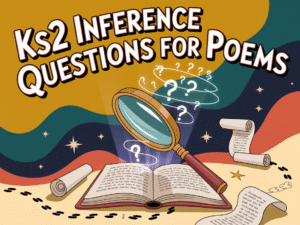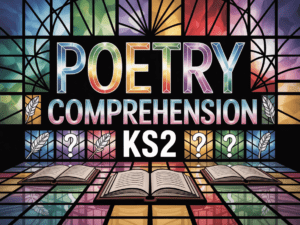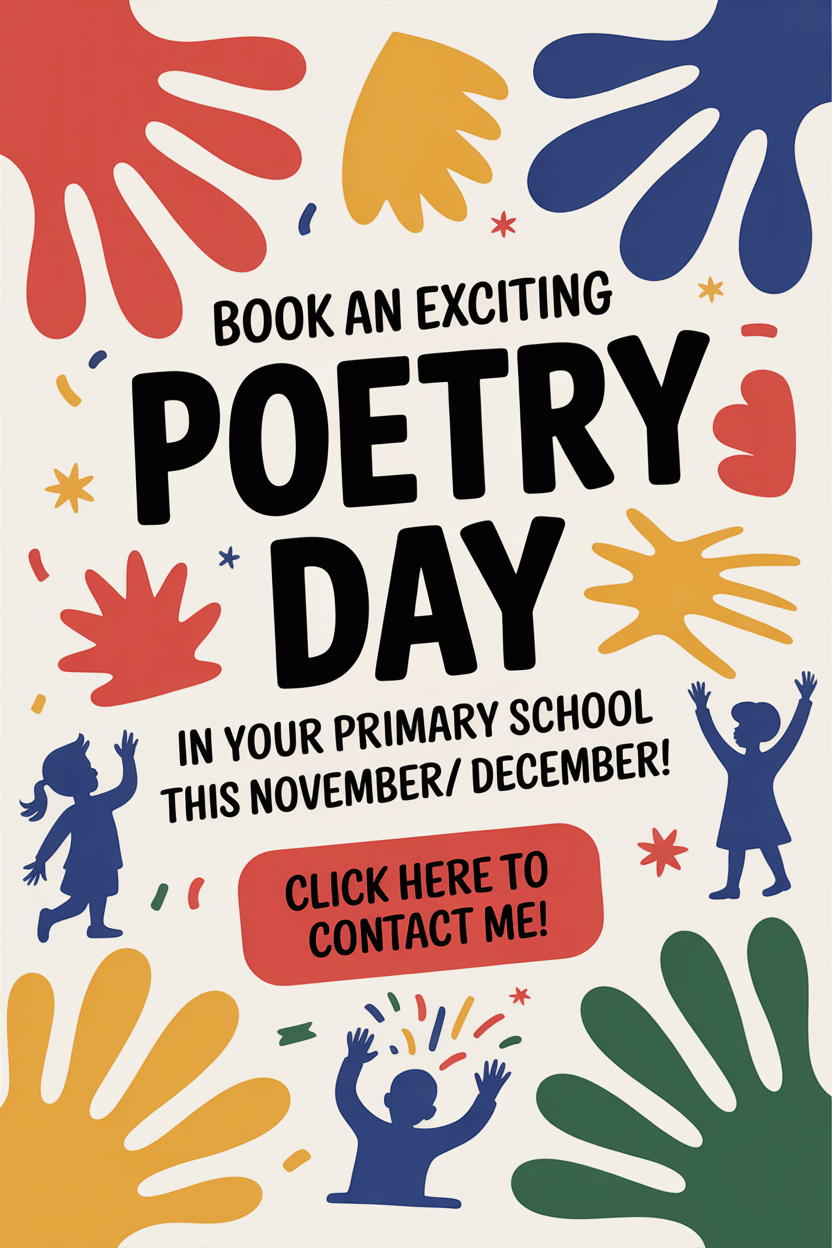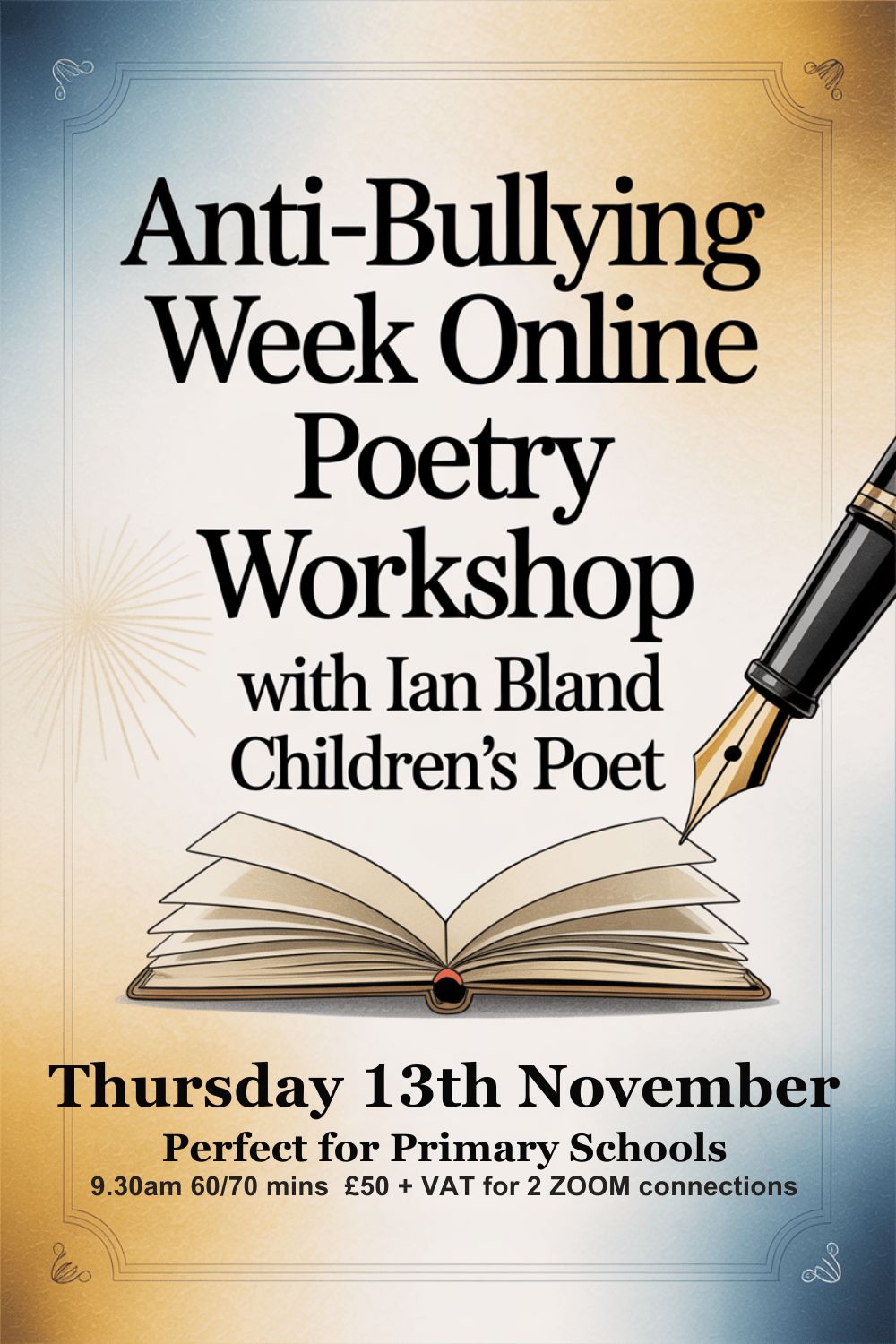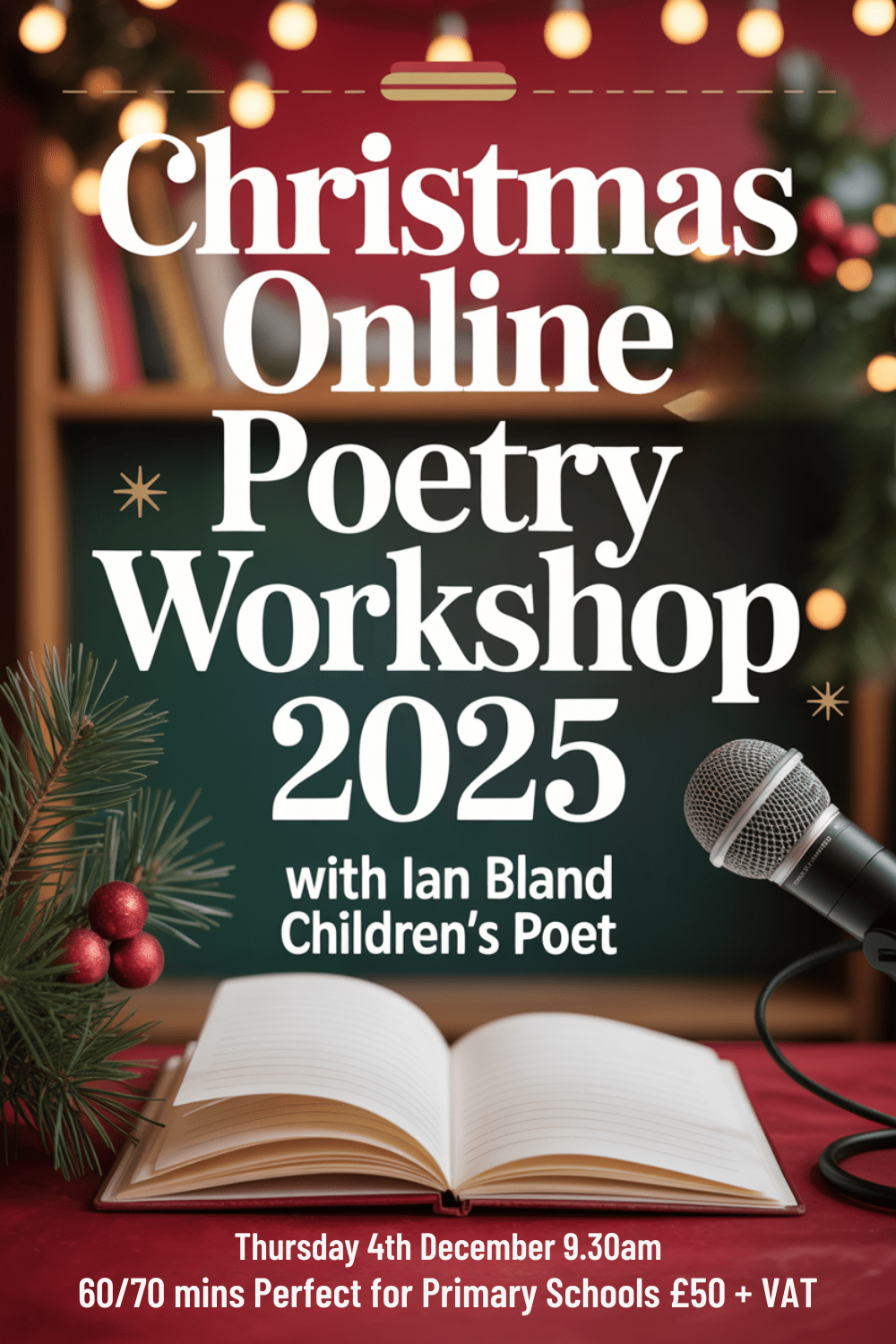KS2 Inference Questions for Poems 🕵️♀️ | The Monster in My House (Free Printable Worksheet)
Teaching inference through poetry helps children look beyond what’s written and think deeply about meaning, clues and perspective.
This funny poem — The Monster in My House — is perfect for developing inference skills in Year 5 and Year 6.
With the right questions, pupils can explore tone, viewpoint and humour, while learning to justify their ideas with evidence from the text.
This post gives you:
✅ Ready-made KS2 inference questions
✅ Model answers for teachers
✅ A free printable worksheet
✅ Simple classroom ideas for Years 5 and 6
✅ A poem that makes inference fun and accessible
Teaching inference through poetry helps pupils:
-
Identify clues hidden in language
-
Explore how poets show emotion and viewpoint
-
Understand humour and twist endings
-
Explain ideas using evidence
-
Discuss tone and meaning with confidence
👉 In my Poetry Days in primary schools across the UK, I help children explore rhythm, language and imagination through performance and writing.
I visit over 100 schools every year — inspiring pupils to see poetry as exciting, expressive and fun.
📅 You can book me for:
-
In-person Poetry Days across the UK
-
Online Poetry Workshops (affordable and interactive)
➡ Secure your date here: Poets in Schools – Ian Bland
Why Use Poetry for Teaching Inference? 🔎
Poems are short, but packed with meaning — every word is a clue!
They’re perfect for inference lessons because pupils can revisit lines, explore subtle language and discuss multiple interpretations.
Poetry inference tasks work brilliantly in:
-
Guided reading sessions
-
Whole-class reading
-
English starter or plenary activities
-
Homework tasks
-
SATs-style inference practice
-
Performance poetry lessons
Example Poem for KS2 Inference 📝
The Monster in My House
by Ian Bland
There’s a monster in my house
He’s very tall and has big shoes.
He has a massive chair
On which he sits to read the news.
He has lots of yellow pointed teeth
And he likes to watch the telly.
He has a deep and slightly scary voice
And his socks are really smelly.
He gets up early every morning
And goes to bed quite late at night.
He sometimes tries to kiss me
But I’m frightened that he’ll bite.
He sometimes tries to chase my mum
And she runs away and squeals.
She’s probably really scared of him
And I know just how she feels.
He has lots of food at mealtimes
And I shout and cry and yell.
Because I’m scared he’ll put me on his plate
And eat me up as well.
But my mum says not to be so daft
He’s really not so very bad.
There’s no monster living in my house —
It’s just a man and he’s my ?
👉 The Monster in My House Poem Download
KS2 Inference & Comprehension Questions for This Poem ✍️
These questions target key reading strands: retrieval, vocabulary, inference and explanation — aligned to the English National Curriculum for upper KS2.
1) Retrieval
-
List two details about what the “monster” looks like.
-
Name two things the “monster” does in the house.
-
How does Mum react to the “monster”?
2) Vocabulary
-
What do the words massive and smelly suggest about the narrator’s viewpoint?
-
Find a phrase that exaggerates an everyday action.
-
Why is the word monster an interesting choice once you’ve read the ending?
3) Inference
-
Who do you think the “monster” really is?
-
Give two clues from the poem that helped you decide.
-
How does the child feel about him? Explain using evidence.
4) Explanation
-
How does the poet create the twist or surprise?
-
Which line gives the biggest clue to the truth?
-
What message or theme do you think the poem explores?
KS2 Poetry Inference Worksheet – The Monster in My House
Teacher Answer Sheet (Model Responses)
1️⃣ Retrieval
Q1. List two details about what the “monster” looks like.
➡ He’s tall, has big shoes, yellow pointed teeth and smelly socks.
Q2. Name two things the “monster” does in the house.
➡ He sits in his chair to read the news, watches television and eats meals.
Q3. How does Mum react to the “monster”?
➡ She squeals and runs away – though playfully rather than in real fear.
2️⃣ Vocabulary
Q1. What do the words massive and smelly suggest about the narrator’s viewpoint?
➡ They show a child’s exaggeration – the poet is using humour and imagination to describe everyday things.
Q2. Find a phrase that exaggerates an everyday action.
➡ “Eat me up as well” – the child imagines Dad might literally eat him.
Q3. Why is the word monster an interesting choice once you’ve read the ending?
➡ Because it turns out the “monster” is the child’s dad; the scary word makes the ending funnier and reveals the child’s misunderstanding.
3️⃣ Inference
Q1. Who do you think the “monster” really is?
➡ The monster is the poet’s dad.
Q2. Give two clues from the poem that helped you decide.
➡ He reads the newspaper, kisses Mum, eats dinner, has smelly socks – all typical dad behaviours.
Q3. How does the child feel about him? Explain using evidence.
➡ The child is both scared and affectionate – frightened that he might “bite” but also amused and curious.
4️⃣ Explanation
Q1. How does the poet create the twist or surprise?
➡ By describing a normal dad as a monster and revealing the truth in the final line.
Q2. Which line gives the biggest clue to the truth?
➡ “She’s probably really scared of him / And I know just how she feels.” – it hints that everyone in the house knows him well.
Q3. What message or theme do you think the poem explores?
➡ It shows how children can misinterpret the adult world and that imagination can turn the ordinary into something funny and magical.
Free KS2 Inference Worksheet (Text Version) 📄
👉 KS2 Poetry Inference Worksheet
KS2 Poetry Inference Worksheet – The Monster in My House
by Ian Bland
Name: __________________________ Date: __________________________
1. Retrieval
a) List two details about what the “monster” looks like.
b) Name two things the “monster” does in the house.
c) How does Mum react to the “monster”?
2. Vocabulary
a) What do the words massive and smelly suggest about the narrator’s viewpoint?
b) Find a phrase that exaggerates an everyday action.
c) Why is the word monster an interesting choice once you’ve read the ending?
3. Inference
a) Who do you think the “monster” really is?
b) Give two clues from the poem that helped you decide.
c) How does the child feel about him? Explain using evidence.
4. Explanation
a) How does the poet create the twist or surprise?
b) Which line gives the biggest clue to the truth?
c) What message or theme do you think the poem explores?
👉 KS2 Poetry Inference Worksheet
Classroom Activity Ideas 🎓
1️⃣ Inference Detectives – pupils highlight clues that reveal the monster’s real identity.
2️⃣ Role Swap – write a new verse from Dad’s point of view.
3️⃣ Performance Twist – act out the poem twice: first scary, then funny.
4️⃣ Create Your Own Monster Poem – describe an everyday person using monster clues.
5️⃣ Comic Strip Retell – draw the story before and after the twist.
Related:
Funny Poems KS2 | Poems about Family KS2 | Performance Poetry KS2
Teacher Pedagogy Notes 👩🏫
Curriculum Links
-
Vocabulary in context
-
Inference and deduction
-
Retrieval of information
-
Explaining meaning and theme
-
Reading aloud with expression
Differentiation
-
Support: sentence stems and highlighted clues
-
Challenge: write six more inference questions
-
Extension: compare two poems with a twist ending
Assessment Idea
Use coloured highlighting:
🟢 Secure understanding 🟠 Developing 🔴 Needs support
Final Thoughts 🌈
Poems like The Monster in My House make inference lessons lively and memorable.
They encourage children to spot clues, discuss evidence and enjoy humour in poetry.
With ready-made questions and a printable worksheet, this lesson saves teachers time while deepening understanding of inference and perspective.
If you’d like me to help your pupils explore comprehension, rhythm and performance, book a Poetry Day or Online Workshop — I’d love to bring poetry to life in your school.
Bring Poetry to Life in Your School!
👉 In my Poetry Days I show children how to find clues, feelings and fun in every poem.
📅 Book a Poetry Day across the UK or join an Online Poetry Workshop for KS2.

